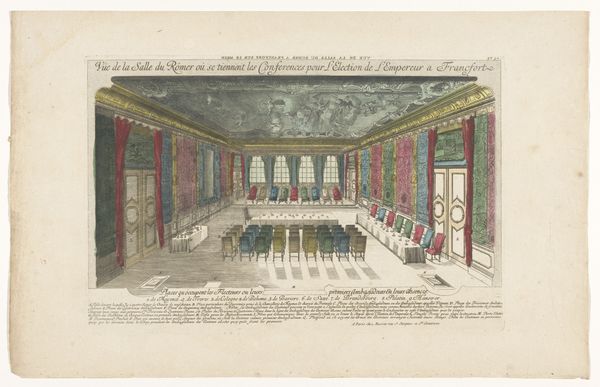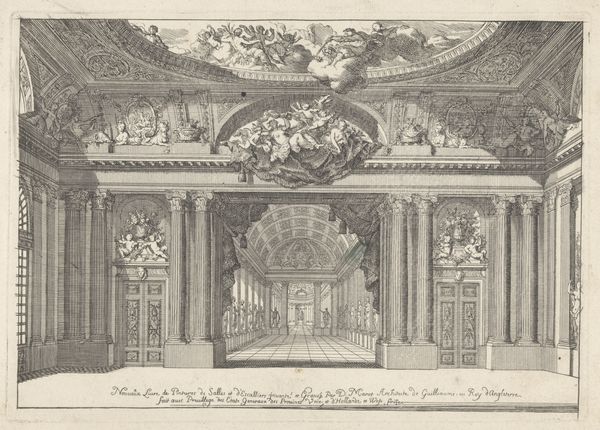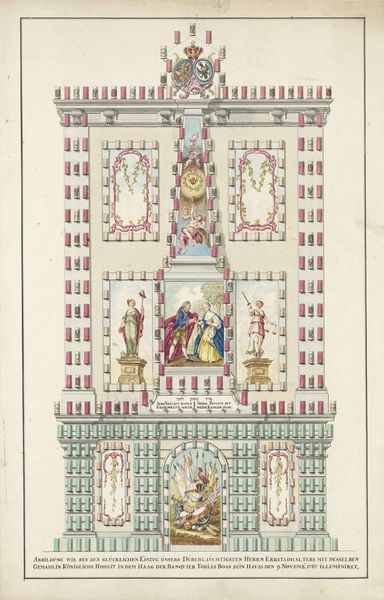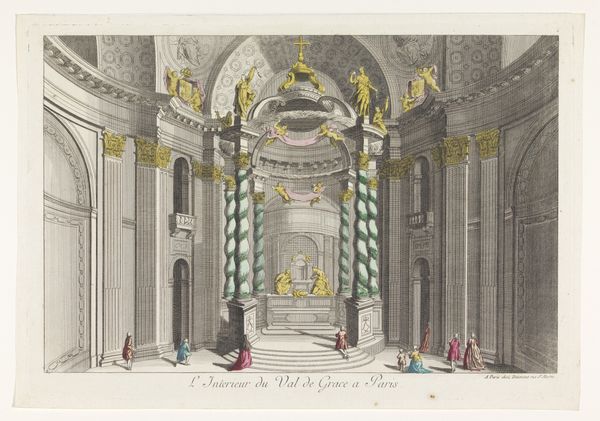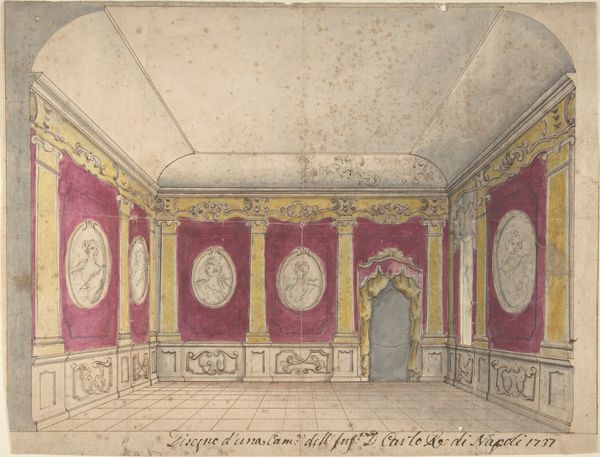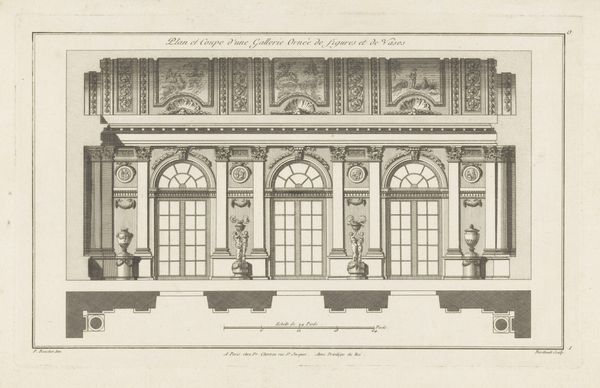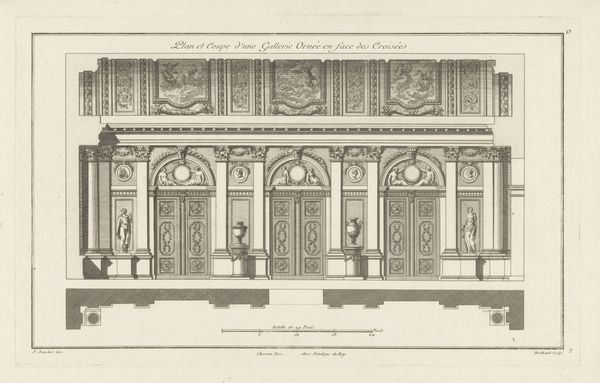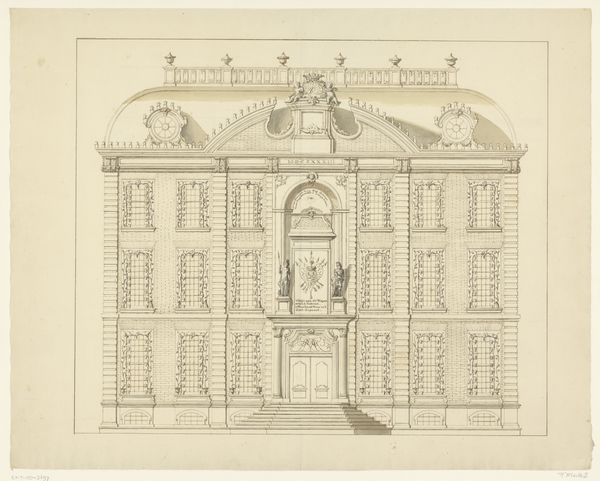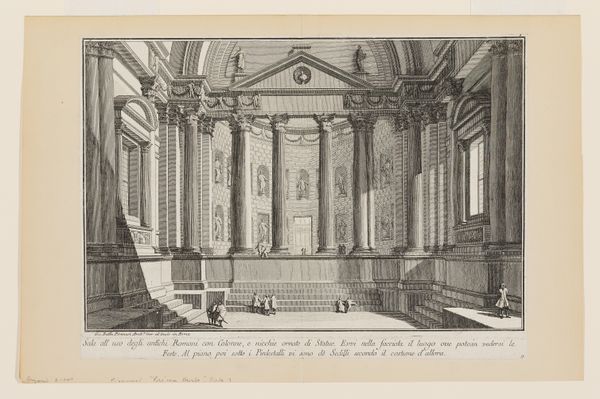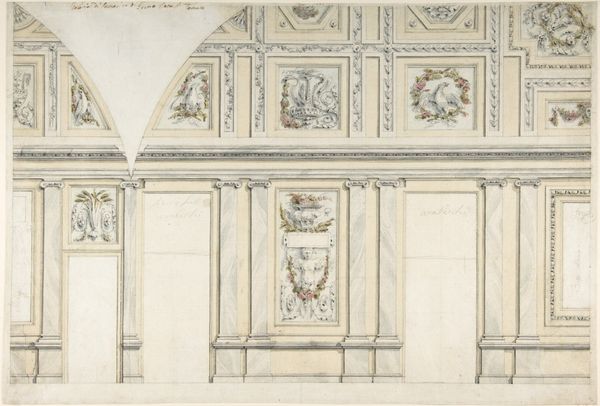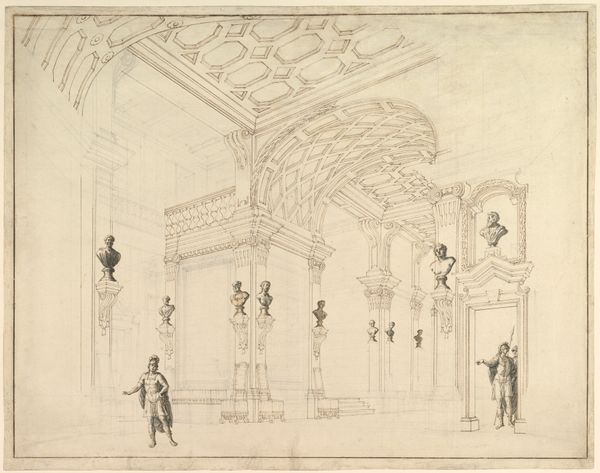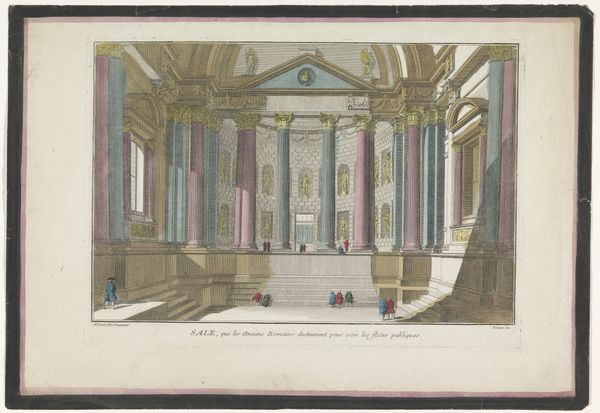
Aanstaande Eenheid en Onverdeelbaarheid, van het Bataafse Gemenebest en de Alliantie, decoratie op het Stadhuis op de Dam, 1795 1795
0:00
0:00
drawing, paper, watercolor, pencil, architecture
#
drawing
#
neoclacissism
#
paper
#
watercolor
#
coloured pencil
#
pencil
#
cityscape
#
watercolour illustration
#
history-painting
#
watercolor
#
architecture
Dimensions: height 373 mm, width 488 mm
Copyright: Rijks Museum: Open Domain
Curator: The cool detachment in this rendering strikes me first. It's almost a stage set. Editor: Well, look closer; it is a set, or rather a drawing of one. We’re viewing an anonymous depiction of the Amsterdam City Hall decked out in celebratory decoration back in 1795. It's done with pencil, watercolor, and coloured pencil on paper. Curator: Note the garlands. Ovals presenting scenes of unity. Even a liberty pole front and center. A fascinating display of symbols promoting civic virtue. I can feel the urge for unity. But, the symbols… they feel more like… hopes than realities. Editor: Right, 1795 was a year of upheaval. The Batavian Republic was newly formed, heavily influenced by revolutionary France. This decor… it's pure propaganda made manifest. And rendered, notably, on paper. I think about the economics that this involved... Who designed and fabricated these temporary decorations, and who made and sold the paints? Curator: A moment of projected national identity frozen in a fragile medium. The use of neoclassical elements – the symmetry, the columns – is telling. It consciously invokes a historical continuity, grounding this new republic in established principles. I wonder, who was this designed for? And did it make them think and feel like this was intended? Editor: Presumably for those with means to see it, and to shape public perception during a period of transition. The ephemeral nature of these decorations mirrors the uncertainties of the time. Now lost in time; yet frozen, via watercolors, in the here and now. Curator: It captures a brief moment where civic spectacle meets carefully constructed symbolism. The architecture is present as a constant. It provides a reassuring sense of stability even during rapid political change. Editor: Indeed. Even the paper bears witness to a fleeting ideal—unity celebrated in watercolor washes. Curator: Precisely. It makes you consider what traces those ideals, so vividly rendered here, have left in Amsterdam’s cultural memory. Editor: The making of a nation represented through the means of artistic production, both practical and deeply aspirational.
Comments
No comments
Be the first to comment and join the conversation on the ultimate creative platform.
